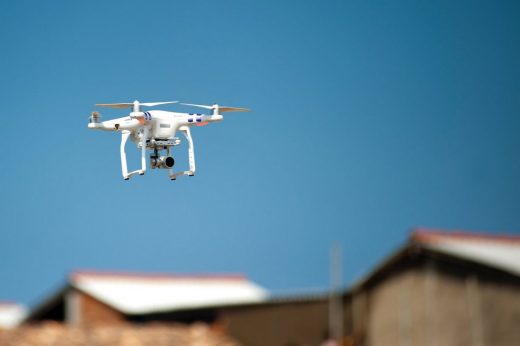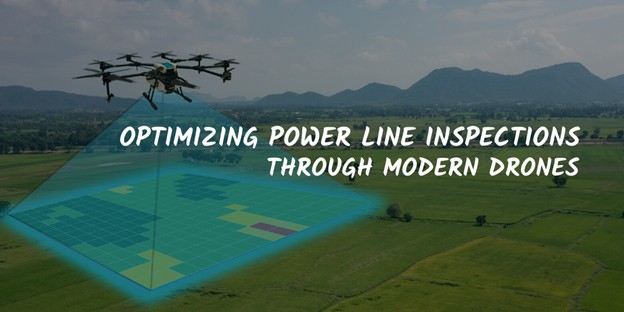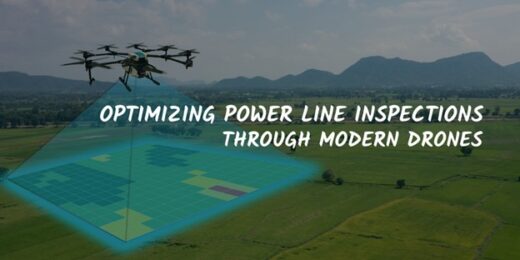Architects drones, Building aerial photos, Architectural filmmaking, Construction property film flying camera
Optimizing Power Line Inspections Through Modern Drones
3 June 2022
Drones are a great addition to the power line industry, mainly because preventative maintenance is essential. Transmission and power lines stretch for several kilometers, making them difficult to inspect regularly.
On top of this, these areas tend to pose a hazard for inspection and maintenance teams alike. Climbing inspections and loose debris also increase the risk for onsite injuries, and standard methods take time.
A small flying camera can make a huge difference in power line inspection. It can help teams assess damage from a distance, making inspection and maintenance safer and more efficient.
Common Defects During Power Line Inspection
Power line inspections are vital to minimize power interruptions and ensure that power lines are efficient. Drones can speed up inspections and ensure that linemen can make the proper repairs when needed.
Using a small flying camera to inspect power lines allows linemen to check different types of damage:
- Concrete foundation defects
- Overheating (insulator or wire)
- Wire breaks/guyed wire quality
- Obstructions (e.g., birds’ nests)
- Weather damage
- Rust/cracks
- Equipment check/missing components
Optimizing Power Line Inspection with Drones
Linemen and utility workers need to conduct power line maintenance regularly to minimize power interruptions. While they sometimes use a UAV for drone power line inspection, they often use different types of inspection methods like:
- Drive-By Inspections – Major damages from fallen trees or loose and damaged equipment are visible. Drive-by inspections check for these types of damages, especially in the aftermath of natural disasters.
- Pole/Structure Inspection – Wooden poles tend to deteriorate over time, making this the priority of pole inspections. However, they can also inspect pylons and concrete poles to check for structural integrity.
- Detailed Inspection – Detailed inspections involve visual inspections, usually conducted at the base of each pole. However, linemen and maintenance workers can also climb the pole for signs of damage.
So, what makes power line drone inspection more efficient than standard methods?
There are many ways drones are valuable, not just in inspection but also in data management. Aerial inspections have many applications, such as:
#1. Power Grid/Pylon Inspection
Pylons can be especially difficult for utility workers to inspect, given their size. Drones can help through the following:
- Object and Defect Detection: Whether high-voltage equipment or loose guy wires, drones can easily recognize and track them with built-in software.
- Thermal Imaging: Thermal imaging also makes it easier for linemen to assess damages and detect faults, especially in voltage transformers.
#2. Power Line Inspection
Power lines are extensive and often situated near residential and commercial areas. To ensure safety and efficiency, drone power line inspection can offer the following for linemen and utility workers:
- Weather Monitoring: Drones can have built-in weather monitoring software to assess the weather in problem areas. Field technicians can take appropriate action and bring the right equipment accordingly.
- Extended Flight Time: Longer batteries mean longer flight time, which allows drones to yield more valuable data in real-time with each flight.
#3. Pole/Tower Inspection
Electricity poles and transmission towers can be expected but are just as complex and hazardous to inspect and repair. Power line drone inspection can speed up checks with the following:
- Real-Time Mapping: Visual data from the built-in mapping software in drones can help isolate defects.
- Stabilized Imaging: With the help of stabilized imaging, the footage is less blurry, and images are sharper. Built-in software can then recognize objects and damages faster and more effectively.
How architects capture work using drones – The Takeaway
Power lines and transmission cables tend to stretch for several kilometers, making inspection time-consuming and hazardous. On top of this, poles and towers can be several meters tall and put linemen at the risk of falling.
The good news is that a small flying camera can sometimes make all the difference. With the right features, it can minimize onsite injuries and make repairs more efficient.
Are you looking for a suitable drone to get the job done? Look no further. Book your first demo with ZenaDrone today!
Comments on this Optimizing Power Line Inspections Through Modern Drones advice – property flying camera films article page are welcome.
Drones
Drone Posts
Drones as digital construction assistants
Enhancing property maintenance with drone inspections
How architects capture their work using drones

Ultimate Guide For Your Kleiner Drohnenführerschein Online
Buildings
Contemporary Architectural Designs Articles
Comments / photos for the How Architects Capture Their Work Using Drones – Architectural flying camera page welcome






